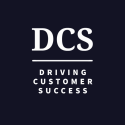Customer Success & Onboarding : One Size Does NOT Fit All

The Importance Of “Adaptive” Onboarding
by Srikrishnan Ganesan, Co-founder of Rocketlane
Ask any expert gardener for a list of plants to start a garden, and they’d tell you there’s no universal answer. They’d ask for the location: Balcony? Outdoor? Indoor? This would help them understand the amount of sunlight available. Next, they’d ask how much effort you’re willing to put in to tend to the plants and if you’d want low-maintenance or high-maintenance plants. Then, they’d shortlist suitable plants. Each plant on that list will need a different amount of sunlight, quantity of water, type of soil and frequency of fertilization.
Customer onboarding is a lot like gardening. Every customer you acquire comes with a different level of industry knowledge, awareness of their pain points and tech-savviness. Therefore, as the expert, you need to tailor onboarding plans, best practice recommendations, communication plans, etc. to help their garden thrive.
Meet customers where they are.
Most companies see some new customers check out during onboarding. It doesn’t take a scientist to know that disengagement will likely lead to the loss of that customer. A major reason for disengagement is that onboarding isn’t designed for the maturity level of the customer and their business. You can’t expect a customer at Level 1 to go to Level 5 after the onboarding is complete.
A better approach would be to identify a realistic target and help them hit it. At Rocketlane, for example, when our customer’s team has experience using client onboarding tools, we work on getting them to use our “power” features like document templates, advanced integrations and time tracking. If the team has just been using checklists and spreadsheets, we start with getting them to use our basic project templates and customer collaboration features before introducing them to more advanced features.
If you don’t tailor onboarding to the maturity level of each customer, you risk boring them with what they already know or creating a huge gap between their needs and the value demonstrated through the onboarding process. Most customers are unlikely to overcome that gap.
Customer success teams need to be on top of bridging the gap. There can’t be a cookie-cutter approach to onboarding because each customer is different — and so is each person in each customer’s company.
If your product is a SaaS HRMS tool, for example, you could be dealing with different types of users: Some may be advanced “power users” with extensive experience and aptitude. Other customers may have no clue where to begin because this is their first time using an HRMS tool.
In the case of the power users, it makes sense to skip intensive training or hand-holding. Instead, opt for a more collaborative approach, where you work with them to identify the problems they’re trying to solve and demonstrate how your product will solve them.
For the technically inexperienced, it makes sense to create a detailed plan, walk them through it and work with them to involve the required personnel from their end. They will also require training and implementation assistance.
Onboarding goes hand-in-hand with customer success, and it’s important to understand that success may look different for each customer — and different from how the vendor defines it. In the HRMS tool example, success may look like automating payslip generation or making new employee onboarding hassle-free for the customer. Successful onboarding could mean the customer using your platform with minimal glitches and reduced support tickets.
Success for other customers may be complex with multiple components. Some may even have an emotional aspect, such as assuaging certain fears, generating pride or instilling confidence among the executive team or employees. When approaching customer onboarding, keeping these other outcomes in mind will help the program more closely meet their needs.
Get your customer to collaborate rather than participate.
Planning and executing customer onboarding should not be a one-sided affair. The customer and the vendor should engage in both the planning and the execution to enable better customization and achieve better results. In addition, this shared responsibility will result in more adaptive onboarding that is amenable to mid-course corrections.
Achieving this shared management is best accomplished through careful initial planning, ongoing communication, a shared system of record for project management, up-to-the-moment monitoring or tracking and even a shared repository for documents.
Standardize repeatable processes.
While tailoring onboarding to each customer is critical, identifying repeatable processes and effective content will help customers achieve success. These can be defined in templates and playbooks that eliminate the need to reinvent the wheel for each customer and help drive continuous improvement of the onboarding process.
Standardizing these processes and content requires several competencies. First, there needs to be a centralized repository for documents and details. Many organizations have these spread over numerous systems, ranging from someone’s computer to various file shares to document management systems. Moreover, individual practitioners may have details and know-how they don’t think to share. Centralizing and systematizing these insights is a vital first step. These processes then need to be assessed for the results they achieve with a careful system of metrics and measurements. Ideally, this can be done throughout each onboarding process.
Once these optimized processes and documents exist, they still need to be adaptable to each customer. However, with preparation, this often involves only fine-grained adjustments, rather than major overhauls.
Onboarding is a crucial part of the customer journey.
The onboarding phase of your customer’s journey will make or break their experience with your business. Their first impression can decide whether they’ll churn. Onboarding should drive customer success and get customers off to the best possible start. You can — and should — use this phase to empower them to handle their business needs with ease. Start by understanding their needs and work towards crystallizing your onboarding goals together.
-See full article on Forbes.

Hakan Ozturk
Founder, theCScafe.com, #1 Weekly Customer Success Newsletter
Hakan Ozturk is a Paris-based Customer Success leader with over 15 years of experience in the computer software industry. Passionate about driving growth and delivering value to strategic customers, Hakan has established himself as a trusted industry expert. As the Founder of The Customer Success Café Newsletter and TopCSjobs.com, Hakan provides valuable industry insights and daily-updated job opportunities worldwide in the field of Customer Success. Connect with Hakan to boost your career in CS and your company’s potential for massive growth.

Leave a Reply